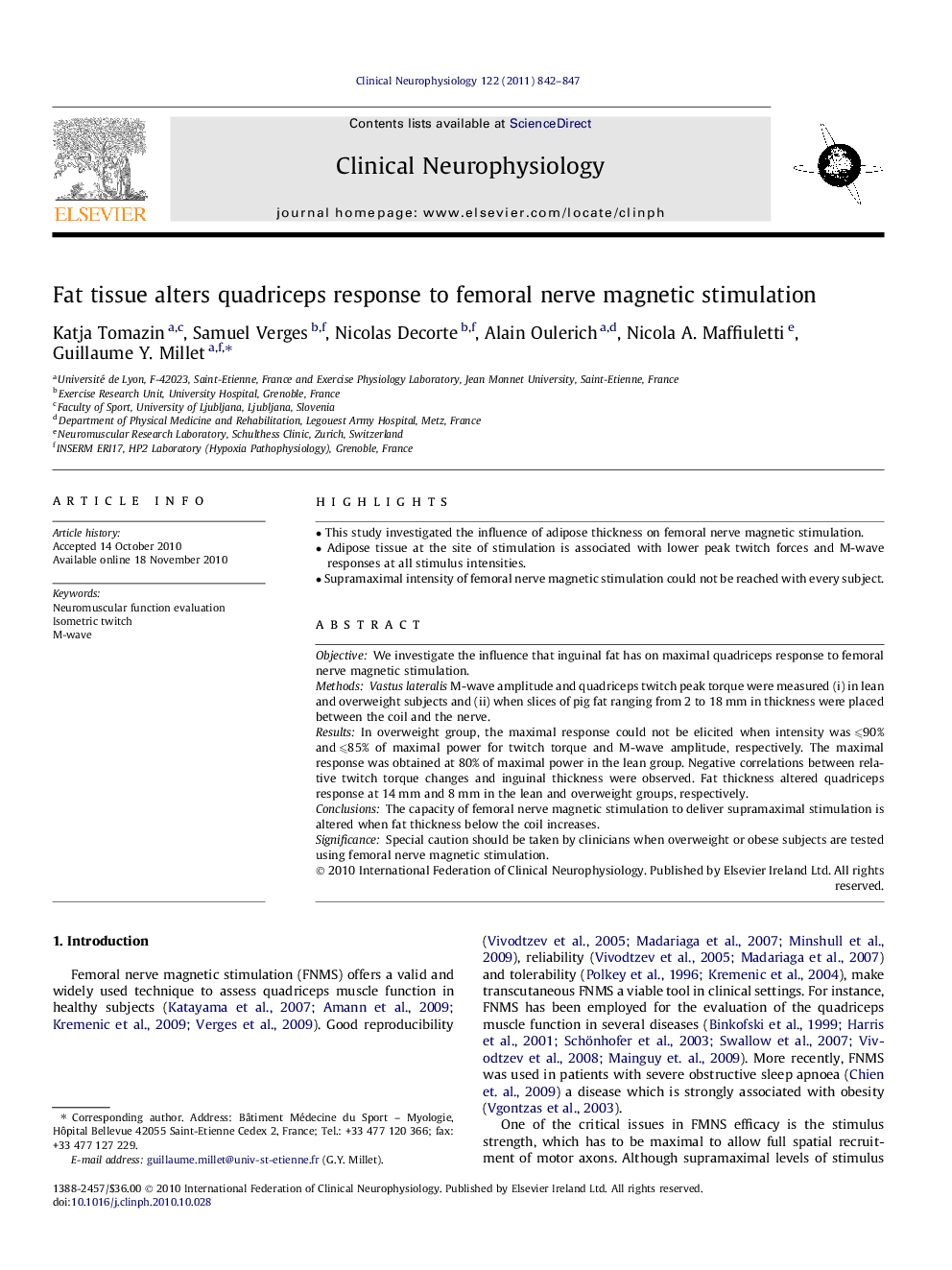| Article ID | Journal | Published Year | Pages | File Type |
|---|---|---|---|---|
| 6009134 | Clinical Neurophysiology | 2011 | 6 Pages |
ObjectiveWe investigate the influence that inguinal fat has on maximal quadriceps response to femoral nerve magnetic stimulation.MethodsVastus lateralis M-wave amplitude and quadriceps twitch peak torque were measured (i) in lean and overweight subjects and (ii) when slices of pig fat ranging from 2 to 18 mm in thickness were placed between the coil and the nerve.ResultsIn overweight group, the maximal response could not be elicited when intensity was ⩽90% and ⩽85% of maximal power for twitch torque and M-wave amplitude, respectively. The maximal response was obtained at 80% of maximal power in the lean group. Negative correlations between relative twitch torque changes and inguinal thickness were observed. Fat thickness altered quadriceps response at 14 mm and 8 mm in the lean and overweight groups, respectively.ConclusionsThe capacity of femoral nerve magnetic stimulation to deliver supramaximal stimulation is altered when fat thickness below the coil increases.SignificanceSpecial caution should be taken by clinicians when overweight or obese subjects are tested using femoral nerve magnetic stimulation.
⺠This study investigated the influence of adipose thickness on femoral nerve magnetic stimulation. ⺠Adipose tissue at the site of stimulation is associated with lower peak twitch forces and M-wave responses at all stimulus intensities. ⺠Supramaximal intensity of femoral nerve magnetic stimulation could not be reached with every subject.
